Orange County oil spill: A week later, water remains off-limits
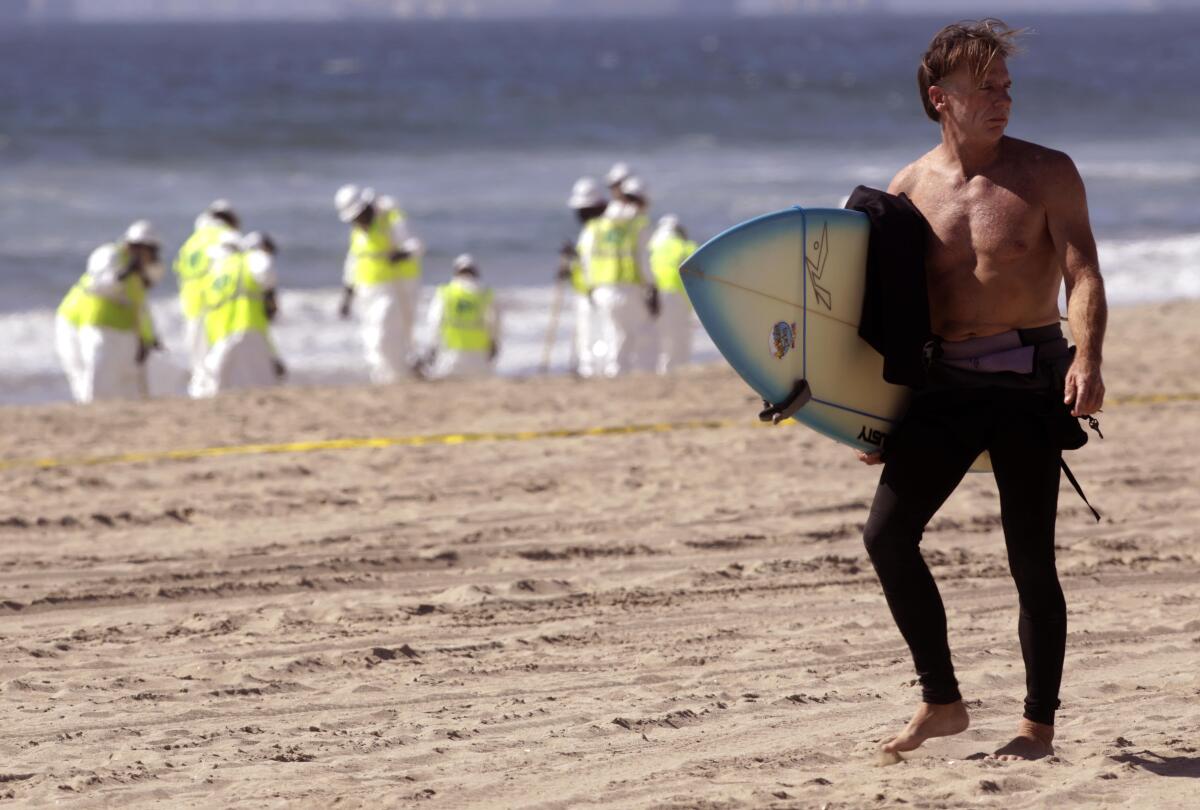
- Share via
Small, glassy waves rolled up on shore Saturday morning, one week after an oil spill sent black tar clumps onto the sand in Huntington Beach, raising fears of long-term damage to fragile ecosystems in the area and cutting off ocean access to residents, visitors and fishermen.
But that didn’t stop a dozen or more surfers in dark wetsuits from running into the water for a morning session. They caught a few good waves before a lifeguard blared down from a blue tower.
“Attention, surfers. Attention, surfers,” a voice bellowed through a bullhorn. “The water is currently closed due to hazardous conditions.”
Huntington Beach resident Brett Simpson, 39, and Long Beach resident Ralph Rodriguez, 62, lugged their boards out of the water and across the sand, where they convened near the shower by the parking lot.
“Water’s cleaner than tap water,” said Rodriguez. “There’s no oil out there. If there was oil out there I would have been the first one out of the water. I’m old, man.”
One week since the public learned about the oil spill — whose residual plumes officials say are now heading toward the beaches in northern San Diego County — several key questions remain: When and how was an oil pipeline damaged? What happened in the 15 hours between the first oil spotting and when federal authorities were notified? And how big, exactly, was the leak?
In the first few days after the spill, officials warned that up to 144,000 gallons of crude may have seeped out of the pipeline, which runs from the Port of Long Beach to a processing and production platform off the shoreline in Huntington Beach.
But later in the week, a U.S. Coast Guard official explained that the spill was likely smaller than initially projected, downgrading the expected leak size to between 24,696 and 131,000 gallons.
Last week, tar balls and patties swept onto the shoreline, some reaching as far as San Diego County, and as of Saturday afternoon more than 1,300 people were still out cleaning the shoreline in much of Orange County.
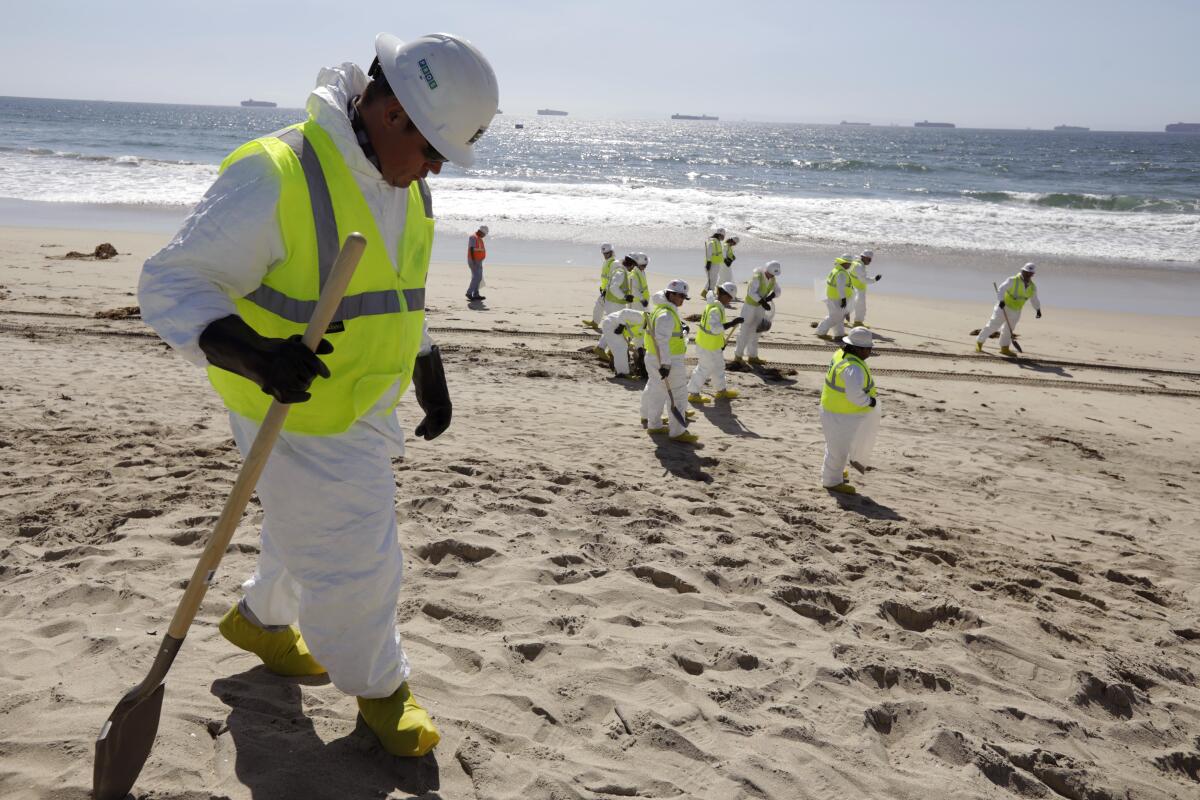
Cleanup efforts are now focused largely on the beach rather than the ocean, according to Coast Guard Petty Officer Steve Strohmaier, who said that “little if any” oil had been seen on the water during recent aerial surveys. Weather conditions were ideal for beach cleaning on Saturday, he said, noting that crews were identifying and cleaning affected areas, including in Laguna Beach and Dana Point.
As of Saturday morning, officials said more than 5,500 gallons of crude oil had been recovered by vessel and 232,500 pounds of oily debris had been recovered from shorelines, including more than 13 barrels of tar balls recovered on Friday.
Orange County Supervisor Katrina Foley said at a news briefing Saturday that while the ocean remained closed, businesses on the harbors had begun to open, noting that foot traffic was starting to pick up in Newport Beach.
“It’s a good day,” Foley said.
But that doesn’t negate the losses felt by surf shops, restaurants and commercial fisherman who rely on open beaches to drive traffic — and revenue.
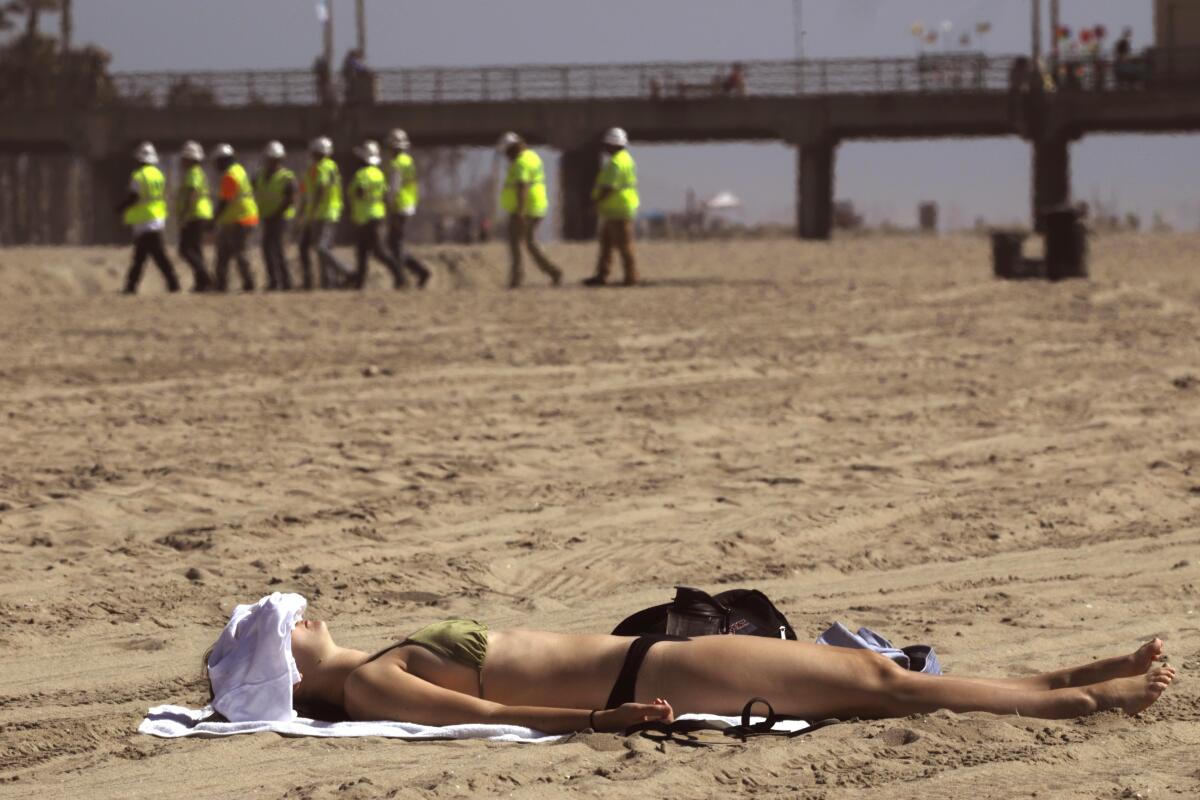
After the spill, several businesses along the coastline were shut down for several days. One of them belonged to Mike Ali, who sat beneath a red umbrella on the patio of Zack’s, one of three surf rental shops and restaurants he owns in Huntington Beach.
In the last week, Ali said, he had closed two of his shops, laid off 10 employees and calculated tens of thousands of dollars in losses.
“This oil spill created a nightmare for the beachgoers, the surf industry, my rentals, my food. It’s been devastating,” he said. “We lost literally 100% of the tourism that comes this time of year.”
Foley said the county is working to provide recovery grants of $5,000 to $20,000 to business owners affected by the closures and encouraged residents to document their losses and file a claim with the Unified Command.
“My office is committed to making sure that businesses get made whole in this process,” she said.
Yvonne Addassi, the chief of preparedness for the Office of Spill Prevention and Response in the California Department of Fish and Wildlife, told reporters at the briefing that the beaches will reopen to the public once tar stops washing ashore — likely within the next two weeks, she said.
“The last thing we would want to do is open up a beach and then have more tar balls wash ashore,” she said.
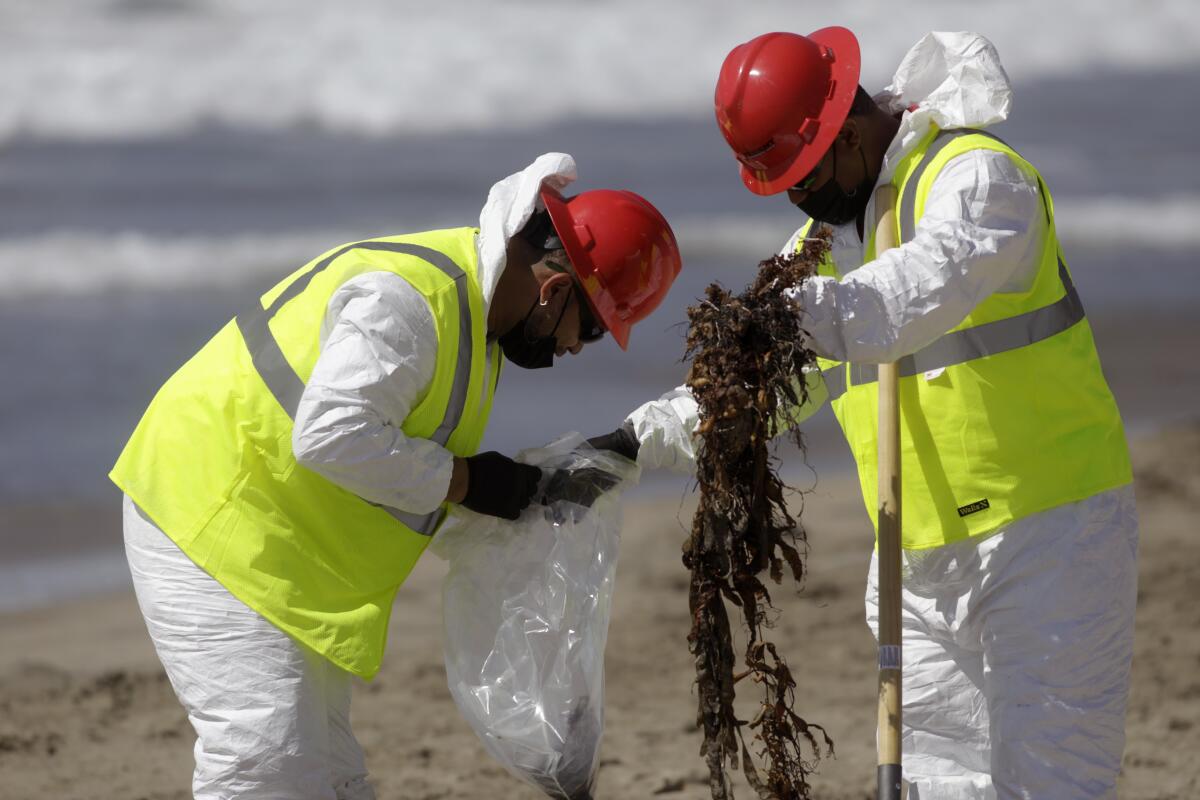
State agencies are continuing to monitor environmentally sensitive sites in Orange and San Diego counties, deploying boom and constructing sand berms to prevent the flow of oil into sensitive habitats.
In the weeks ahead, the focus will turn to examining potential long-term effects of the spill on the creatures living in and around the water, including western snowy plovers, federally listed as threatened shorebirds who only recently returned to the sandy beaches of Orange County.
An early working theory was that a backlog of cargo ship traffic waiting offshore in the hours before the spill was directly tied to the leak. Federal officials explained that a ship’s anchor dragging across the sea floor could have scraped the pipeline.
By midweek, the spotlight had turned toward a massive cargo ship called the Rotterdam Express, which had been anchored in the area of the pipeline before the spill was discovered. U.S. Coast Guard officials examined the vessel Wednesday and the company says it was eventually told by the officials that the ship was no longer under investigation.
The true timeline of when the pipe was first damaged, officials said Friday, could stretch back several months or perhaps nearly a full year.
Amplify Energy’s CEO has offered information that conflicts with federal records and provided vague responses to questions at news conferences.
An initial anchor strike may have dislodged a portion of the pipeline, stripping it from its concrete casing and making it more vulnerable in the months that followed, Coast Guard officials said, adding that they were zeroing their focus on a storm with gusty winds in late January. It is clear from the marine growth on the displaced part of the pipeline, officials said, that the anchor drag likely didn’t happen recently.
The head of Amplify Energy, the company that operates the drilling rig, has evaded questions about the timeline of the company’s actions in the hours before federal authorities were informed about the oil leak. And parsing out what exactly happened during the 15-hour gap between the first sighting of oil in the water and the time federal authorities were informed of the leak will no doubt play a key role in the investigation.
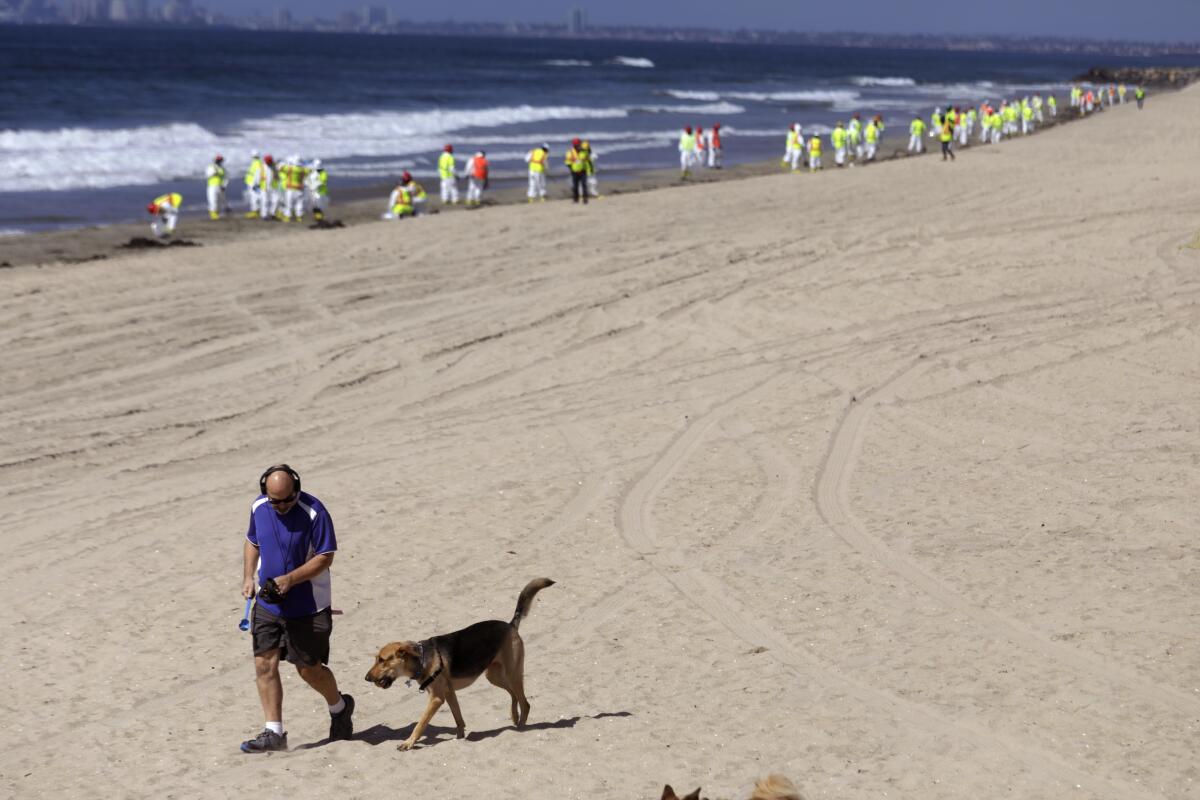
Back in the beachside parking lot Saturday morning, Simpson and Rodriguez reminisced about years of surfing together in Huntington Beach. Oil rigs on the horizon have always been the backdrop, they said.
“We’ve got to be stricter and on top of them,” Simpson said of the oil companies. “They get a little fine, a slap on the wrist — it’s nothing to them.”
More needs to be done to hold the companies accountable, he said.
Rodriguez nodded in agreement.
“If we don’t have an ocean, we don’t have life,” he said. “We need the ocean. Right, Brett?”
Later in the day, dozens gathered at the base of the Huntington Pier for the annual International Surfboard Builders Hall of Fame induction ceremony, a long-standing event that was canceled last year due to COVID-19.
Among the crowd was California surf legend and board maker Mickey Munoz, who is famous for his “Quasimodo” stance.
Having lived and surfed in Southern California for most of his life, Munoz is no stranger to oil spills. Standing near the pier, he recalled a surf competition in the 1970s in which riders emerged from the water covered in black tar.
“We’re never going to reverse the nature of mankind,” he said, motioning to the oil platforms dotting the coast. “The die has already been cast here in Southern California.”
Munoz crinkled the fabric of his black windbreaker emblazoned with his nickname, “The Mongoose,” with his hands.
“Half the stuff I have on was made with oil,” he said.
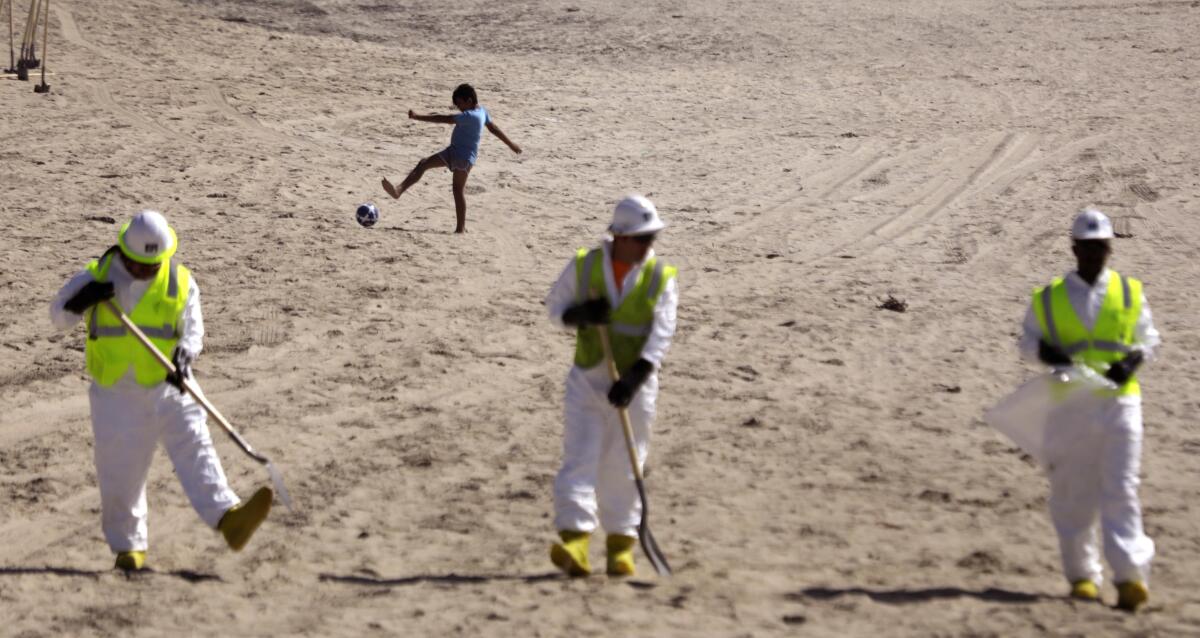
More to Read
Sign up for Essential California
The most important California stories and recommendations in your inbox every morning.
You may occasionally receive promotional content from the Los Angeles Times.
















